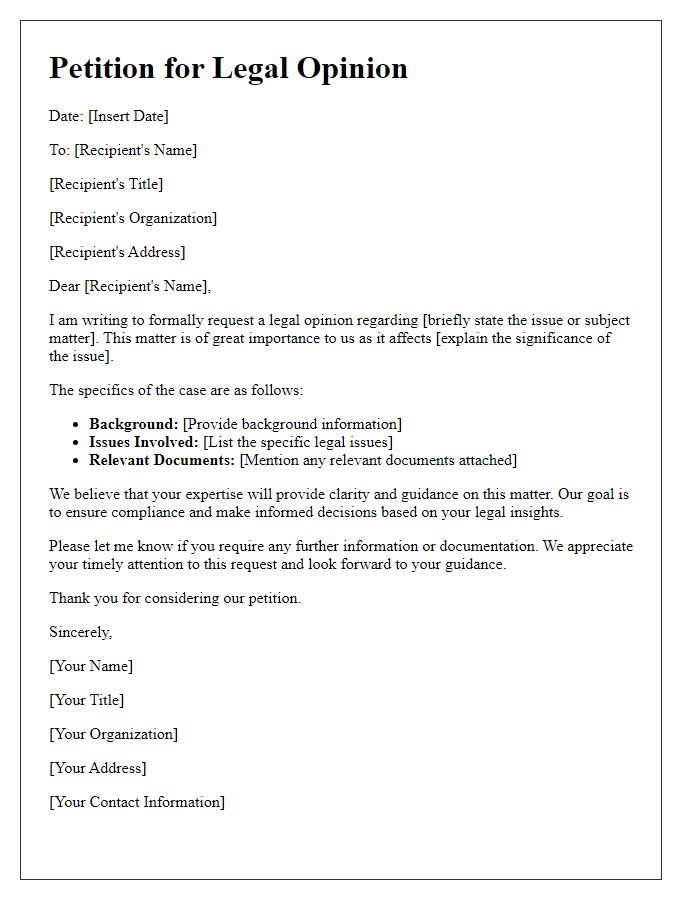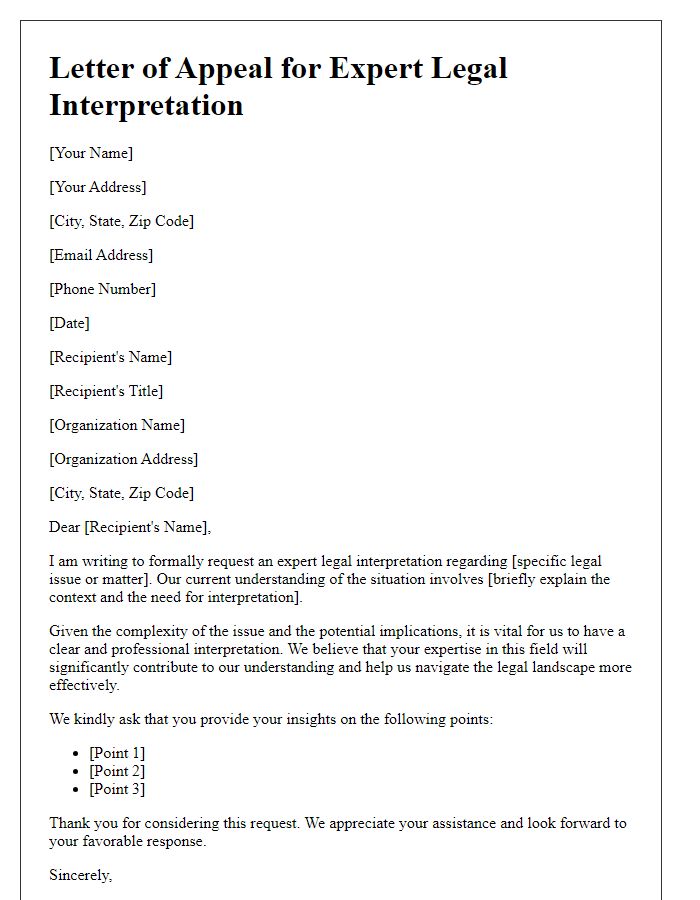Are you navigating the often complex waters of legal opinions and wondering how to effectively communicate your thoughts? Crafting the perfect letter template can make all the difference in ensuring clarity and professionalism in your message. Whether you're drafting a legal opinion for a specific case or seeking to provide guidance on regulatory matters, having a well-structured format is essential. Join us as we explore the key elements of a successful legal opinion letter that can make your communications shine!

Introduction and Context
A legal opinion issuance serves as a formal assessment of a specific legal issue or question, often provided by a qualified attorney or legal expert. This document typically addresses various aspects such as the interpretation of statutes, case law, and regulatory frameworks that apply to the issue at hand. The context could involve scenarios like corporate transactions, compliance with federal laws like the Sarbanes-Oxley Act of 2002, or evaluating contract enforceability under the Uniform Commercial Code (UCC). The recipient may include corporations, governmental bodies, or individuals seeking clarity on legal rights and obligations. Providing this legal insight can influence decision-making processes, risk management strategies, and potentially prevent costly litigation.
Statement of Facts
In legal proceedings, a Statement of Facts serves as a critical document summarizing the relevant events and circumstances surrounding a case, especially in instances like a contract dispute or a personal injury claim. This structured narrative should detail specific dates, locations, and individuals involved, providing a clear timeline for the events in question. For instance, an automobile accident occurring on July 15, 2023, at the intersection of Main Street and Elm Avenue in Springfield must be outlined with precision, noting key elements such as the parties involved (Driver A and Driver B), vehicle types (sedan and SUV), and weather conditions (clear and sunny). Details about prior communications, such as emails or letters regarding obligations or responsibilities, enhance the contextual understanding of the situation. These factual accounts are vital for the legal analysis and opinion that will follow, allowing attorneys and judges to grasp the essential details and legal grounds of the case effectively.
Legal Issues and Analysis
A legal opinion issuance involves meticulous examination of statutes, regulations, and case law relevant to a specific issue. This analysis often highlights key legal principles, such as negligence standards under tort law (requiring a duty of care, breach, causation, and damages), which can significantly impact litigation outcomes. Additionally, statutory interpretations from relevant jurisdictions, like the New York General Obligations Law, can play a crucial role in shaping legal arguments and potential liabilities. Noteworthy cases, such as 'Smith v. Jones' (2020), may serve as pivotal precedents, illustrating judicial reasoning and outcomes that could influence similar future litigations. Furthermore, the application of administrative rules, like those from the U.S. Environmental Protection Agency, may determine compliance obligations and regulatory implications. Each of these components combines to form a comprehensive legal opinion tailored to guide decision-making processes in complex legal scenarios.
Conclusion and Recommendations
A legal opinion issuance often entails a thorough analysis of specific laws, regulations, and relevant case precedents pertinent to the matter at hand. Following rigorous examination, conclusions are drawn based on the legal framework governing the situation, which may include substantial references to statutes such as Section 15 of the Contracts Act or Article 24 of the Constitution, along with case law like Smith v. Jones, a Supreme Court ruling from 2019. Recommendations are then crafted to guide the client, ensuring compliance with applicable legal standards, mitigating risks, and advocating for favorable outcomes. Noteworthy points could encompass suggested courses of action, such as pursuing mediation as a dispute resolution mechanism or initiating statutory proceedings under applicable labor laws within the prescribed timeframe of three months. It is crucial for the client to be informed of their rights and obligations under current legislation to make informed decisions moving forward.
Disclaimer and Limitations
Legal opinions play a crucial role in providing guidance on various matters, including compliance with laws and regulations. The disclaimer within such documents highlights the inherent limitations of legal advice. Legal opinions do not guarantee outcomes; they merely reflect interpretations based on the law as of the date issued. Context-specific elements--such as jurisdictional nuances (for example, the specific laws in New York or California) or evolving legal standards--can significantly impact the validity of the opinion over time. For example, changes in tax laws or corporate regulations can render previous opinions outdated. Users of legal opinions should engage qualified legal counsel and consider ongoing developments that may affect the advice provided.













Comments